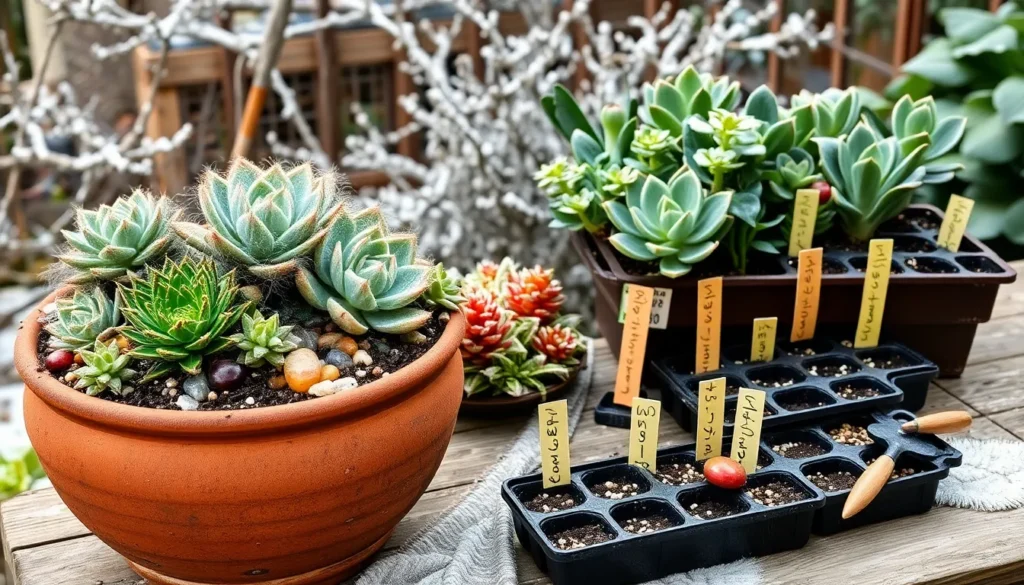As the crisp air begins to bite and the landscape transforms under a frosty blanket, many gardeners retreat indoors, leaving their green spaces to rest until spring. However, winter offers a unique opportunity to nurture and prepare your garden, ensuring it thrives when the warmer months return. This season is not just a time of dormancy but also a chance to lay a strong foundation for future growth, and with the right tools and techniques, your garden can remain a vibrant oasis even during the chilliest days.
Whether you’re a seasoned gardener or just beginning your horticultural journey, understanding the essentials of winter gardening can enrich your experience and elevate your garden’s resilience. In this article, we will share nine proven winter gardening essentials that will help safeguard your plants, improve soil health, and maintain a flourishing garden all year round. From choosing the right protective coverings to optimizing your soil’s condition, these insights are designed to empower you with confidence and knowledge, encouraging you to embrace the winter season with enthusiasm and anticipation.
Choosing Hardy Winter Plants
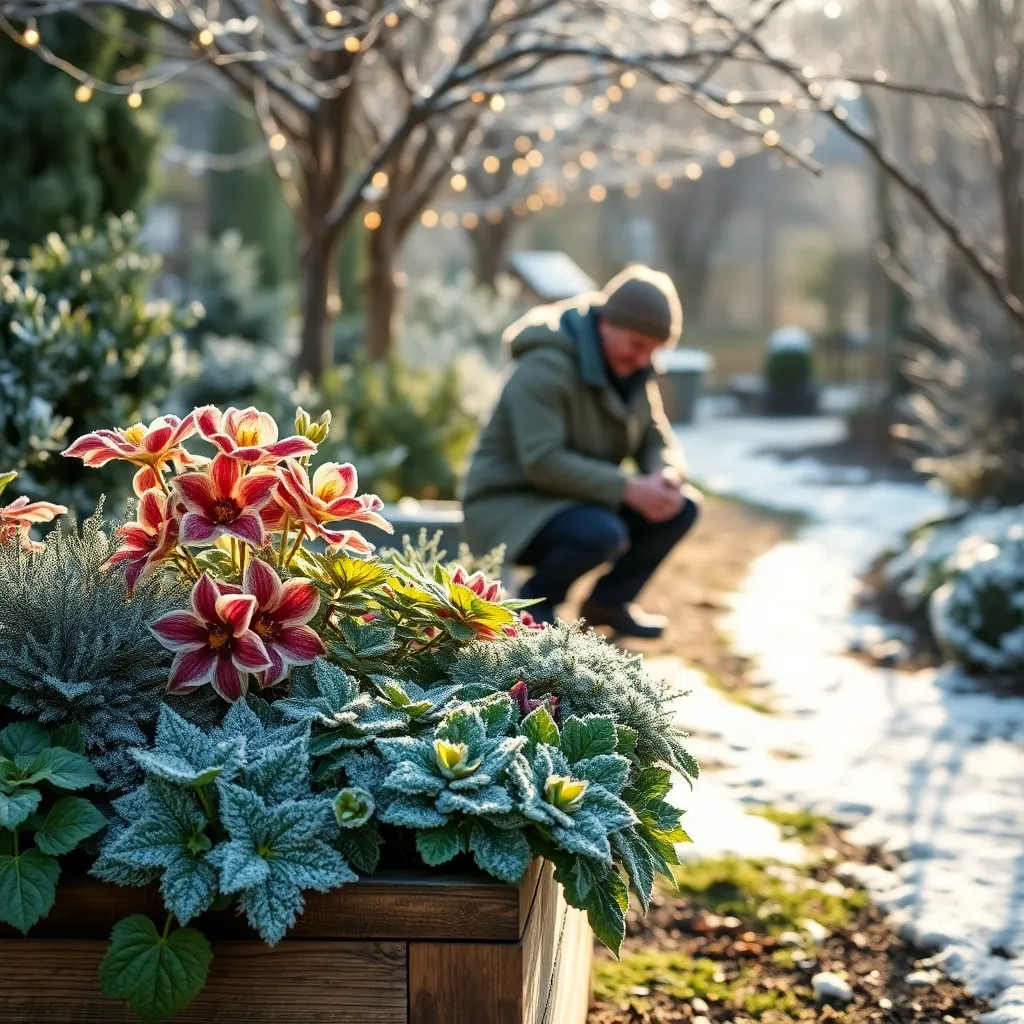
When selecting hardy winter plants, it’s essential to choose varieties that thrive in cooler temperatures. Evergreens like juniper and boxwood are excellent choices as they maintain their foliage year-round, providing color and structure to your garden even in the depths of winter.
Consider incorporating winter-blooming flowers such as hellebores and winter jasmine to add bursts of color. These plants are not only beautiful but also resilient, capable of withstanding frost and thriving in well-drained soil.
For those looking to experiment with edibles, hardy vegetables like kale and Brussels sprouts can be a rewarding option. These plants not only tolerate cold weather but actually improve in flavor after a frost, making them a delicious and nutritious winter crop.
Advanced gardeners can experiment with winter cover crops such as clover or vetch. These plants enrich the soil with nutrients, suppress weeds, and can be tilled into the soil in spring to improve soil structure and fertility.
Optimizing Soil for Cold Months

As temperatures drop, preparing your soil is crucial to ensure your garden thrives during the cold months. Begin by adding a layer of organic mulch, such as straw or shredded leaves, to insulate the soil and retain moisture.
Applying a layer of compost or well-rotted manure can enrich the soil and improve its structure. This not only provides essential nutrients but also enhances the soil’s ability to support plant roots during colder weather.
Consider testing your soil’s pH and nutrient levels before winter sets in. Adjusting the pH with lime or sulfur, as needed, helps maintain optimal growing conditions for your winter plants.
For those in areas with harsh winters, utilizing cover crops can be an advanced technique to protect and rejuvenate soil. Legumes, such as clover or vetch, can fix nitrogen in the soil, improving fertility and preventing erosion.
Implementing Effective Frost Protection
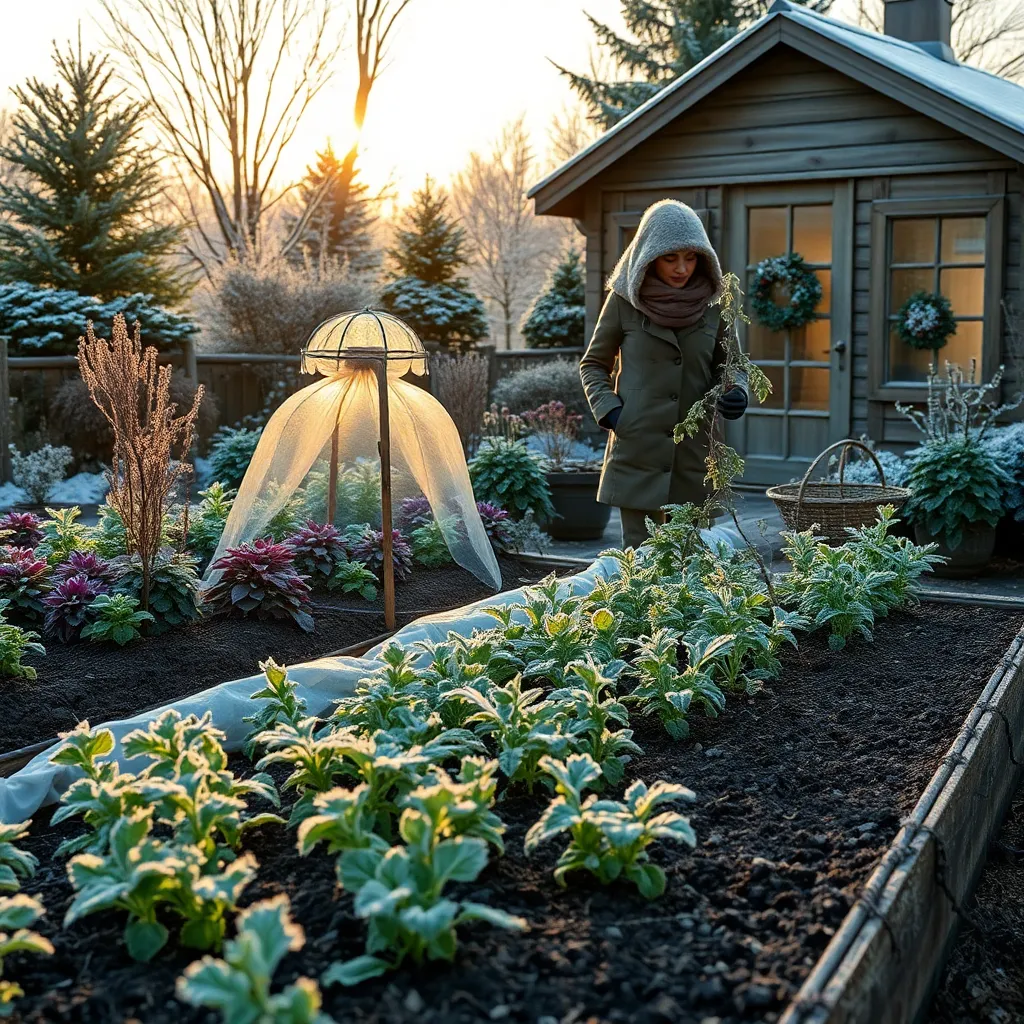
As winter approaches, protecting your plants from frost is crucial to ensure they thrive when spring returns. One effective method is using frost cloths or horticultural fleece, which can be draped over plants to create a barrier against the cold.
Alternatively, consider using mulch to insulate the soil and retain heat. Apply a layer of mulch, such as straw or wood chips, around the base of your plants, ensuring it is a few inches thick to provide adequate protection.
Watering your plants adequately before a frost can also help, as moist soil retains heat better than dry soil. However, avoid watering during freezing temperatures to prevent ice formation that can damage plant roots.
For advanced gardeners, creating a microclimate can offer significant advantages. Utilize structures like cold frames or cloches to trap heat and shelter plants, especially those that are more sensitive to cold.
Efficient Winter Watering Strategies
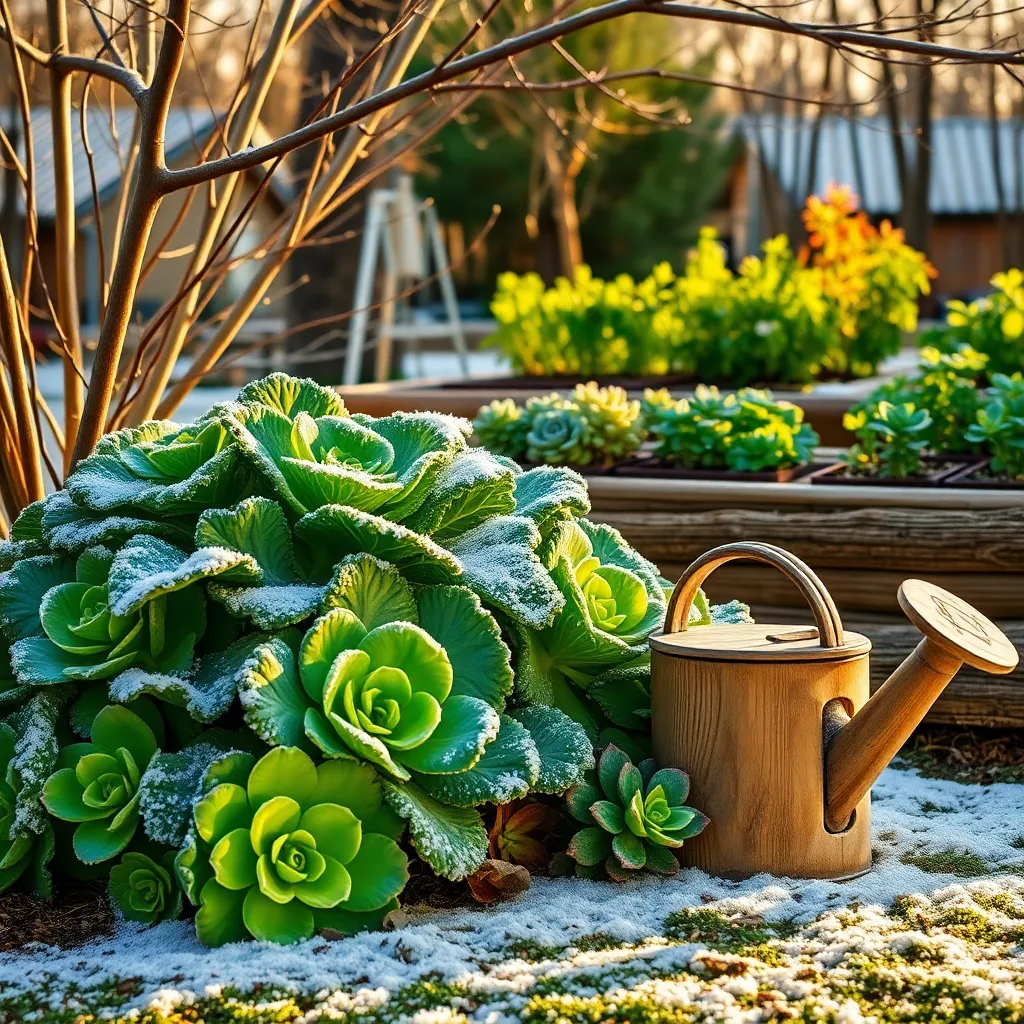
Winter watering is crucial for maintaining plant health during colder months, as plants still require moisture even when growth slows down. Make sure to water your garden early in the day, allowing the soil to absorb the moisture before temperatures drop at night.
Adjust your watering schedule based on the type of soil in your garden, as clay soils retain moisture longer than sandy soils. For clay soils, water less frequently, while sandy soils may require more regular watering to prevent drying out.
Mulching can be an excellent strategy to help retain soil moisture during winter. Apply a 2-3 inch layer of organic mulch, such as straw or shredded leaves, around the base of plants to insulate roots and reduce water loss.
For advanced gardeners, consider using a moisture meter to ensure your plants receive the right amount of water. These devices can provide accurate readings, helping you avoid over or under-watering, which is crucial in maintaining a healthy garden through winter.
Utilizing Greenhouses and Cold Frames
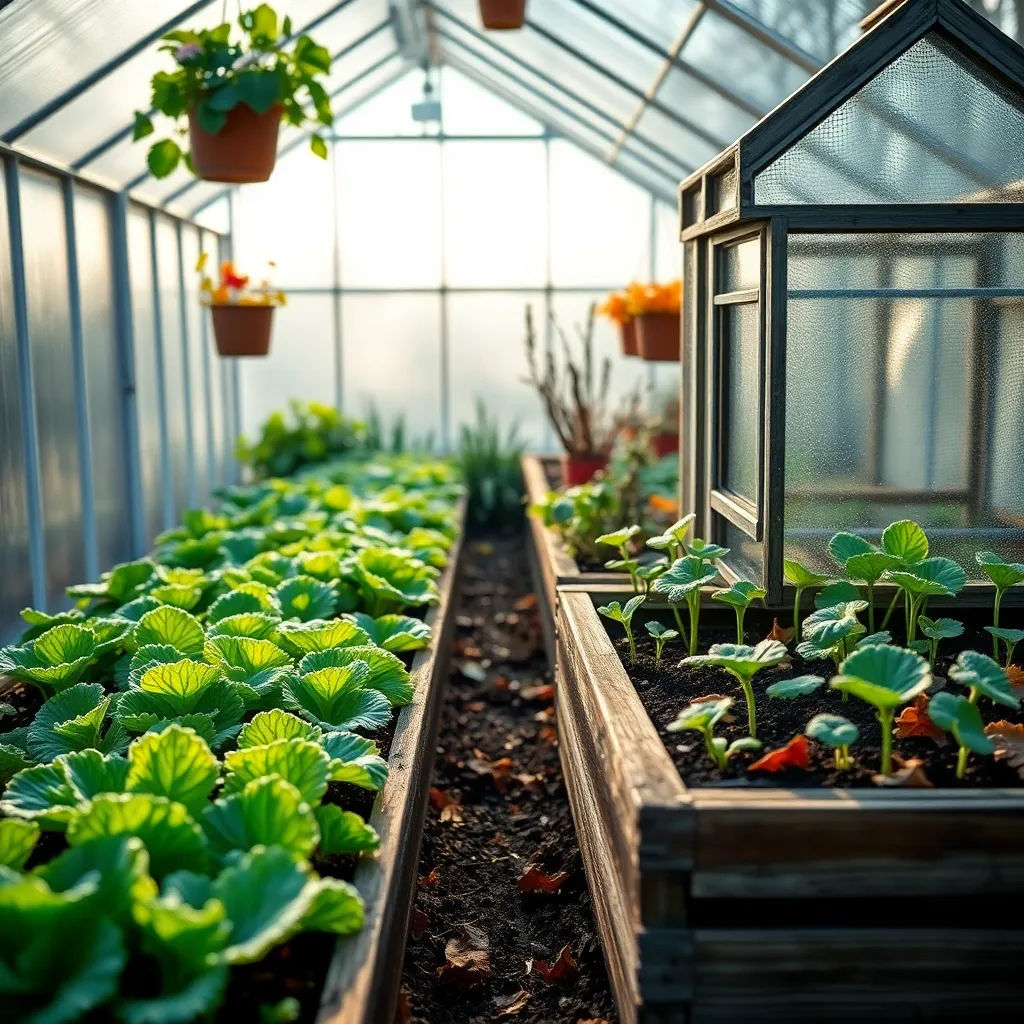
Greenhouses and cold frames are invaluable tools for extending your growing season and protecting plants from harsh winter conditions. By providing a controlled environment, these structures allow you to cultivate a variety of plants even when the outside temperatures dip below freezing.
In greenhouses, maintaining an optimal temperature is crucial; consider using a combination of thermal mass materials like water barrels and proper ventilation to stabilize the internal climate. Insulating the north side of your greenhouse with bubble wrap or horticultural fleece can also help retain heat.
Cold frames offer similar benefits on a smaller scale, perfect for gardeners with limited space. Position your cold frame where it will capture the most winter sunlight, typically facing south or southwest, to maximize warmth and light for your plants.
Use a mix of well-draining soil and organic compost in your cold frame to ensure plants don’t become waterlogged, which is a common issue during the winter months. Regularly monitor moisture levels, adjusting your watering schedule based on the ambient temperature and plant needs.
For more advanced gardeners, incorporating a temperature-sensitive ventilation system in your greenhouse can help maintain the ideal growing conditions without manual intervention. Whether using a greenhouse or cold frame, remember to rotate crops to prevent soil depletion and encourage robust plant growth throughout the winter.
Essential Winter Mulching Techniques
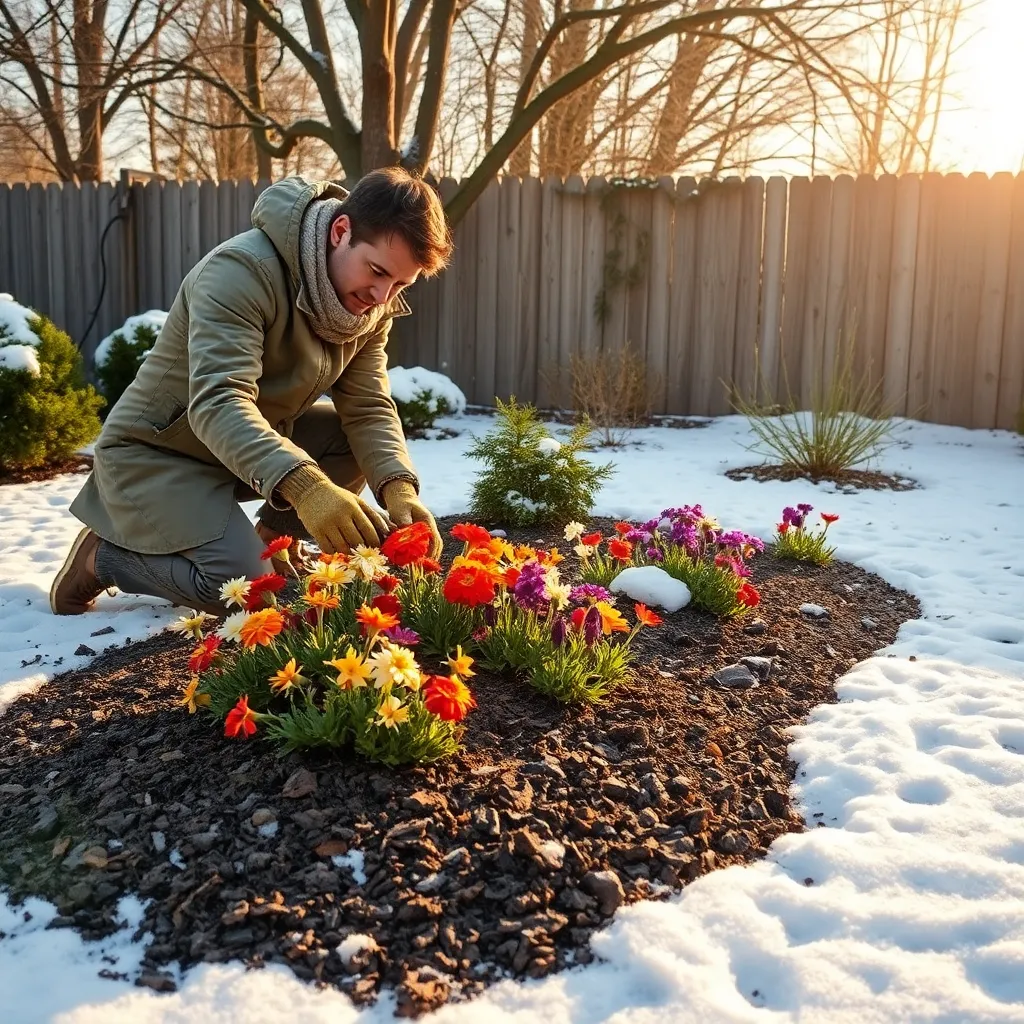
Winter mulching is a crucial technique to protect plants from harsh cold weather by providing an insulating layer. This practice helps regulate soil temperature and retains moisture, reducing the risk of frost heaving that can damage plant roots.
To begin with, choose organic materials like straw, shredded leaves, or bark mulch, which decompose over time, enriching the soil. Apply a layer about 2-4 inches thick around the base of your plants, ensuring you leave some space around the stems to prevent rot.
It’s important to mulch after the first hard frost when the ground is cold but not frozen solid. This timing helps protect the soil from rapid temperature fluctuations and keeps it consistently insulated throughout the winter months.
For more experienced gardeners, consider using a combination of mulching materials for added benefits, such as adding a layer of pine needles for acidic-loving plants. Experimenting with different materials can enhance soil structure and benefit specific plant types, such as blueberries or azaleas.
Pruning for Winter Growth
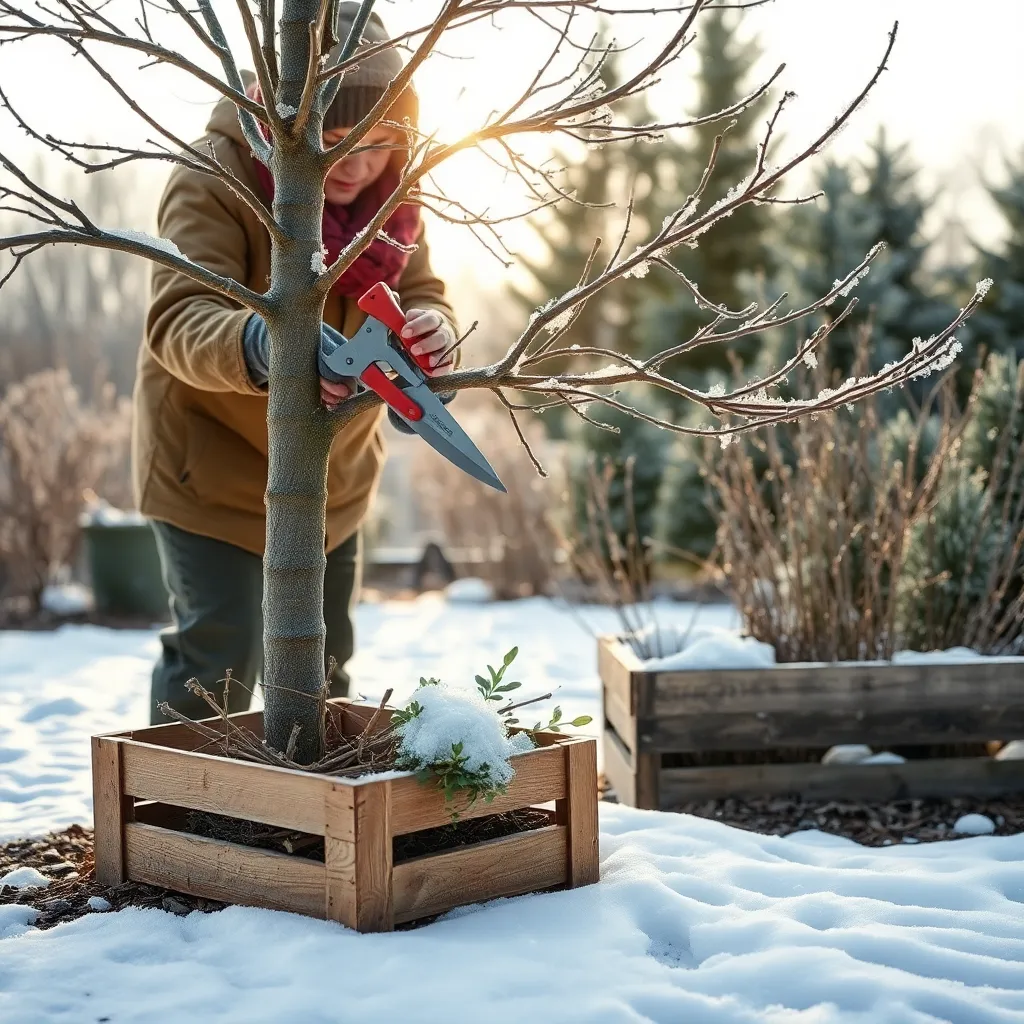
Winter is an ideal time to prune many trees and shrubs, as they are in a dormant state, making them less vulnerable to disease. Pruning during this period helps to shape plants, remove dead or diseased branches, and encourage healthy growth when spring arrives.
Before you begin, ensure your tools are sharp and clean to prevent the spread of pathogens. Using a pair of bypass pruners, cut branches at a 45-degree angle just above a bud facing outward to promote outward growth.
For beginners, it’s important to understand which plants benefit from winter pruning; most deciduous trees and shrubs, such as maples and roses, are ideal candidates. Advanced gardeners may consider a more strategic approach by focusing on crossing branches and thinning dense growth to improve air circulation.
When dealing with fruit trees, such as apple or pear, focus on removing any suckers or water sprouts to direct energy towards productive branches. This targeted pruning not only improves fruit yield but also strengthens the tree’s structure against winter winds.
Protecting Plants from Pests

To protect your plants from pests during winter, start by ensuring that your garden remains clean and tidy. Remove fallen leaves, dead plants, and debris, as these can harbor pests and diseases that thrive in colder months.
Natural barriers can be highly effective in keeping pests at bay. Consider using physical barriers like floating row covers or fine mesh to shield vulnerable plants from insects.
Companion planting is another excellent strategy for pest control. Planting herbs such as garlic and chives near your vegetables can deter pests due to their strong scents.
For a more advanced approach, introduce beneficial insects to your garden. Ladybugs and lacewings can help manage aphid populations, providing a natural pest control method that’s both sustainable and efficient.
Monitoring Winter Garden Health

Winter can be challenging for garden plants, but regular monitoring is key to maintaining their health. Begin by checking soil moisture levels weekly, as many winter problems stem from incorrect watering.
For beginners, an easy way to ensure proper moisture is the finger test; simply insert your finger into the soil to check for dampness. If the soil feels dry more than an inch deep, it’s time to water, but avoid overwatering to prevent root rot.
Experienced gardeners might consider using a moisture meter for more precise readings, especially in larger gardens. This tool can help determine which areas of your garden need more attention, allowing you to tailor your watering strategy.
Beyond watering, keep an eye out for any signs of disease or pest activity, as these can thrive even in colder months. Pay attention to any discolored or wilting leaves, which might indicate an underlying issue that needs addressing.
Inspecting plant stems and leaves regularly will help you catch problems early. If you notice any changes, consider removing affected foliage and applying a mild, organic fungicide to protect the rest of the plant.
Finally, remember to check the condition of any mulch or protective coverings you’ve used. These can shift or degrade over time, so ensure they are effectively insulating your plants from the cold.
Conclusion: Growing Success with These Plants
In navigating the frosty season of winter gardening, we’ve explored nine essential relationship concepts that mirror the nurturing required for a thriving garden. From fostering open communication to cultivating patience, building resilience, and embracing change, each concept is a crucial tool in your relationship toolkit. We’ve also touched on the importance of shared goals, emotional support, and the delicate balance of giving and receiving love, all of which contribute to a flourishing partnership.
As your next actionable step, select one concept that resonates most with you and your partner. Dedicate time this week to discuss how you can incorporate it more fully into your relationship. This small yet significant action can plant the seed for deeper connection and understanding.
Remember, relationships, like gardens, require ongoing care and attention. By bookmarking this article, you’ll have a handy reference to revisit these valuable insights whenever you need a reminder. With consistent effort and a positive outlook, your relationship is poised to not just survive, but thrive, no matter the season. Embrace these proven practices, and watch your connection grow stronger and more resilient every day.

